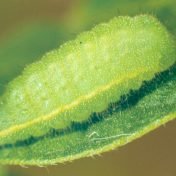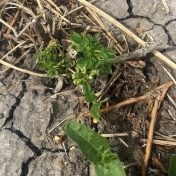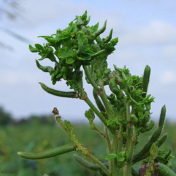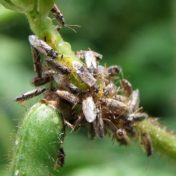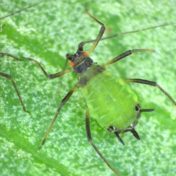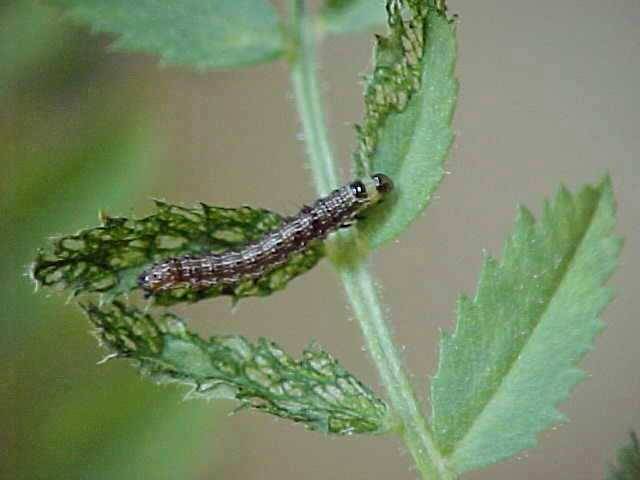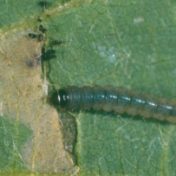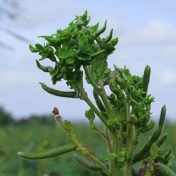A major outbreak of grass blue butterfly (GBB) (Zizina labradus) in late vegetative and flowering soybeans has been reported in the Maryborough/Hervey Bay region. Some crops inspected had 10-12 GBB larvae per square metre with many plants denuded of buds and flowers. Other crops had less damage and fewer larvae (4-5 per square metre), but had 5 or more adult butterflies… Read more »
Phytoplama has been reported in second flower flushes in mungbeans, and also in harvested mungbean regrowth! So far the overall incidence of phytoplasma has been lower than this time last year, but growers and consultants are urged to keep monitoring their crops for the first symptoms of this disease, and to report any outbreaks. Many January-planted mungbean crops are at… Read more »
UPDATE: Crop progress report (March 2018) Recent photos of the crop where a stem fly infestation was reported in early February show signs of stem fly pupation, but no crop stress symptoms (i.e. no yellow and dying leaves), indicating that managing the outbreak when it was first detected would have been a waste of time and money (assuming there will… Read more »
Last summer saw unprecedented levels of phytoplasma in summer pulses/legumes (including chickpeas, mungbeans and pigeon peas) in all cropping regions in eastern and northern Australia from the Ord Irrigation area (WA), Burdekin/Atherton Tablelands (NQ), to central NSW. The most likely insect vector is the brown leafhopper Orosius orientalis, which has been detected in recent (2017) spring crops. While plantings of… Read more »
Although typically only in low numbers in the Northern Grains region, Rutherglen bugs (RGB; Nysius vinitor) were observed at very high densities (e.g. 50 RGB per pod) in many crops last year. A glasshouse study was conducted to determine at what plant stage mungbeans were most susceptible to RGB damage, in terms of both yield and seed quality. To do… Read more »
Megoura crassicauda has been found in parts of north-east and central New South Wales (Sydney, Tamworth, and Breeza). The species originated in north-east Asia, and is closely related to the vetch aphid (Megoura viciae), found in Europe, Ethiopia and North America. Its host range is mostly limited to Vicia species – vetches, faba or broad beans, and may extend to… Read more »
Helicoverpa are the primary insect pest of chickpeas. Beneficial insects that are present in many crops do not thrive in chickpeas, so successful helicoverpa management relies heavily on monitoring and identification, appropriately timing control to crop stage, and using the recommended thresholds. Monitoring involves regular in-field checking with a beat sheet. Additionally, moth numbers can be monitored using pheromone traps… Read more »
Major soybean moth outbreaks have recently been reported in some coastal Burnett soybean crops, and lesser outbreaks in crops in the Burdekin. Soybean moth is generally a minor soybean pest but major outbreaks have been reported periodically in all soybean growing regions. In extreme cases, crops can be totally defoliated. Feeding damage Larvae feed mostly within the leaves, making distinctive… Read more »
Phytoplasma (a specialised bacteria infecting plants) has been widely reported in spring-planted mungbeans from Central Queensland to North Western NSW (Moree and Narrabri) and all areas in between. Symptoms include masses of small deformed leaves, flowers and pods, plants remaining green at harvest, and possibly an increased incidence of puffy pod. While in previous recent summers, moderate to high levels… Read more »
A devastating disease was observed in several paddocks of soybean crops in the Branchview area of the Darling Downs in late autumn 2016. Almost 100 percent of plants were affected in some paddocks. The affected plants produced no, or very few filled pods and instead had a proliferation of tiny immature pods as shown in Photos 1 and 2. The plants… Read more »
